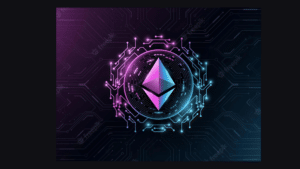In cryptocurrency, a token standard represents a set of rules that determine the way in which a crypto token is created.
Written by: Mike Martin | Updated August 25, 2024
Reviewed by: Ryan Grace
Fact checked by: Laurence Willows
🍒 tasty takeaways
Token Standards in cryptocurrency are protocols and rules for token creation.
These standards ensure interoperability, consistency, and compatibility amongst all tokens that operate under a given blockchain.
ERC represents all Ethereum tokens; BRC represents Bitcoin tokens; TRC represents TRON tokens.
ERC-20 is the standard for fungible tokens on Ethereum while ERC-721 is the standard for non-fungible tokens on Ethereum.
What Is a Token Standard?
In cryptocurrency, a Token Standard represents a particular set of guidelines and procedures used to construct tokens. These standards are responsible for all crypto tokens, which operate atop an existing blockchain network, mostly the Ethereum blockchain network.
Token Standards add three benefits to the crypto ecosystem:
- Interoperability
- Consistency
- Compatibility
You’ll notice in the next section that most crypto token formats have the letters “RC” in their acronyms, such as ERC-20 and TRC-10. “RC” stands for “Request for Comment.” RCs offer a way for developers to obtain feedback and reach consensus on how a blockchain should operate.
Other blockchains, like the BNB Smart Chain, use “EPs”, for instance, BEP-20. Here, “EP” stands for ‘Enhancement Proposal’, which, like RCs, are proposals aimed at making the Binance blockchain better.
Ethereum’s popular ERC standard tokens are sometimes referred to as “EIP” tokens, which means Ethereum Improvement Proposal.
Let’s now take a look at popular token standards!
Token Standards by Blockchain
| Blockchain | Token Standard | Description |
|---|---|---|
| Ethereum | ERC-20 | Technical standard for fungible tokens utilizing Ethereum. |
| ERC-777 | Extends ERC-20 functionality to address limitations. Implements 'Hooks' for combined token sending and contract notification. | |
| ERC-721 | Standard for NFTs on Ethereum. Requires new smart contract for each distinct token type. | |
| ERC-1155 | Manages infinite NFTs in a contract. Allows unlimited tokens within a single contract. | |
| Bitcoin | BRC-20 | Modelled after Ethereum's ERC-20 token. |
| BRC-721 | Smart-contract-based NFTs on BTC. Experimental stage. | |
| Binance | BEP-20 | Fungible token standard. |
| BEP-2 | Non-fungible token standard. | |
| TRON | TRC-10 | Basic standard for TRON tokens. Analogous to ERC-20. |
| TRC-20 | Complex, smart-contract-based. Offers logic beyond TRC-10. | |
| TRC-721 | Standard for issuing NFTs on the TRON network. | |
| TRC-1155 | Represents and manages multiple token types in one contract. Enhances development efficiency. | |
| Solana | SPL Token | Token standard for Solana. Equivalent to ERC-20 on Ethereum. |
Crypto Coin Vs Token
So what standards do bitcoin (BTC) and ether (ETH) use?
None! Bitcoin and ether, like Solana (SOL) and Cardano (ADA), are coins, not tokens. Coins and tokens are fundamentally different types of digital assets.
Tokens power decentralized applications (dApps); coins power blockchains. Cryptocurrency coins are primarily intended for transactions, whereas tokens possess specific use cases and features within specialized apps.
For instance, a platform running atop an existing blockchain may create tokens for purposes like covering transaction fees, facilitating trade on a marketplace, providing discounts/rewards, or engaging in decision-making inside a dApp.
Three popular categories of crypto tokens include:
- Utility tokens
- Security tokens
- Governance tokens
Stablecoins are also examples of tokens because they run on top of an existing blockchain. The USDC token, for example, is an ERC-20 token, which means this token runs atop the Ethereum network.
Generally speaking, coins are used for staking, which helps to secure blockchain networks.
There are many more tokens than coins available to trade. However, you’ll need a self-custody wallet to access most of them as centralized exchanges typically only offer a handful of tokens.
Fungible vs Non-Fungible
Crypto token standards are primarily classified as fungible or non-fungible.
Fungible simply means interchangeable. US fiat currency is fungible because every single US Dollar has the same exact value.
For example, Uniswap (UNI) is the fungible ERC-20 token behind the Uniswap decentralized exchange, which is part of decentralized finance, or DeFi.
Non-fungible means unique. For example, all paintings by Monet are not valued the same – each one is unique and has its own value. In crypto, non-fungible tokens represent all tokens that have unique value.
Digital art represents the most popular variety of blockchain-based NFTs today. Bored Ape Yacht Club and CryptoPunks are the two most popular NFT collections in 2023.
FAQs
Ethereum token standards are the most popular in the world. ERC-20, Ethreum’s standard for fungible tokens, has issued more tokens than any other blockchain.
ERC represents the token standards for the Ethereum network. ERC-20 covers all fungible tokens on Ethereum; ERC-721 covers all non-fungible tokens (NFTs) and ERC-1155 allows for both types with a single contract.
Ethereum’s ERC-20 tokens allow for many benefits, including interoperability, consistency, and compatibility.

Mike Martin
Mike Martin formerly served as the Head of Content for tastycrypto. Before joining tastycrypto, Michael worked in the active trader divisions of thinkorswim, TD Ameritrade, and Charles Schwab. He also served as a writer and editor for projectfinance.
Michael has been active in the crypto community since 2017. He holds certifications from Duke University in decentralized finance (DeFi) and blockchain technology.
🍒 tasty reads


The Core Blockchain and DeFi Ecosystem: What You Need to Know

7 Best DePIN Crypto Projects

What Is Symbiotic and How Does It Work in 2024?

Ethereum vs Ethereum ETFs – 5 Major Differences


